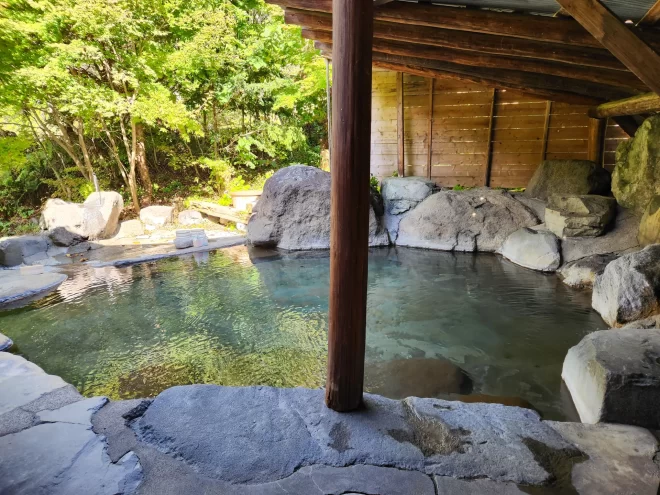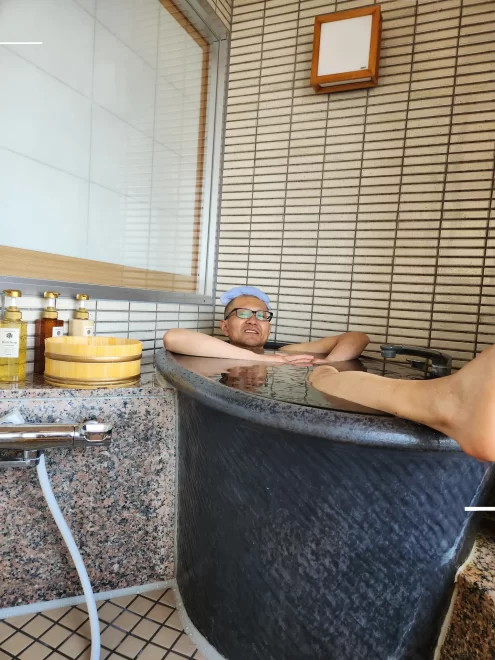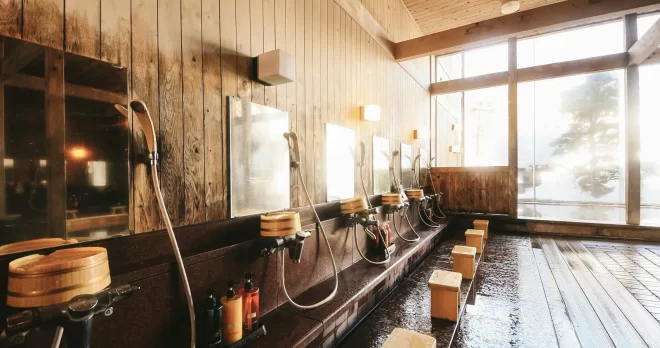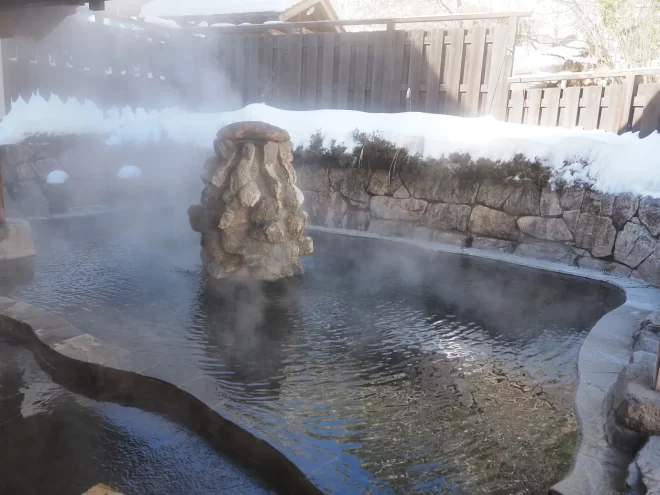After all, guests from overseas are often surprised and troubled by the cultural differences in the country of Japan.
In this issue, we have compiled a list of rules and manners for using Japan’s popular onsen (hot springs) and sento (public bathhouses); fantastic, can’t-miss experiences on one hand, and one of the situations that visitors to Japan can often have trouble with on the other. Below we cover 9 tips to help you bathe like a local, starting with the three cardinal rules of onsen use, followed by more advanced tips and answers to frequently asked questions. Enjoy!
1. Nudity
In general, public bathing in Japan is done in the nude, and clothing and accessories such as swimsuits and sandals are not allowed. Though it may be awkward at first, here it’s simply part of the culture, and a uniquely-Japanese experience we encourage you to try. Some places offer special yuami-gi bathing garments for women who feel uneasy about going uncovered, such as those who wish to hide surgical scars or want to feel comfortable in a mixed-use (male and female) bath. Not all facilities offer this service, so you’ll need to inquire at the front desk of the spa facility.
2. Cleanliness
The bathing pools at hot springs and public bathhouses are shared by many people, therefore, it is important for everyone to work together to keep them clean. Be sure to wash your head and body with soap (when available), and rinse thoroughly before entering the bath. One of the reason clothes, such as swimsuits, are prohibited is to prevent dirt and lint from getting into the bath since they can promote the growth of bacteria. Dipping your head in the bath is also forbidden, and those with long hair should use a hair band to keep it out of the water. If you’re going from the sauna to the bath, shower first to wash away your sweat before getting in.
3. Towels
After stripping down in the changing room, it’s time to head to the bath. It’s important to leave any large bath towels behind, but don’t forget to bring a small onsen towel (hand towel) with you inside. The proper use of this towel is a crucial part of onsen etiquette that many visitors get wrong. Let us explain more:
When walking around the bathing area, use the towel to cover your genitalia. We already mentioned that bathing is done in the nude, but Japan is known as a land of contrasts, and this technique enables you to uphold another key component of Japanese culture before you enter the bath: modesty.
Your towel must never be placed in the bath water. This is to keep the bath clean, as we mentioned earlier. However, the art of maintaining modesty and keeping your towel from touching the water requires a bit of agility and skill. As you transition from stepping into the bath to sitting in the bath, you’ll need to lift the towel just barely before it meets the surface. When done correctly, this delicate dance of flesh and fabric keeps you from exposing yourself and keeps the towel out of the water. The process is reversed when getting out of the bath. If you can manage to pull this off properly, you can consider yourself a real spa pro!
But what should you do with the towel while you’re submerged in hot water? Hold it out of the water with your hands the whole time? There’s no need to do that. The recommended solution is to fold it up and place it on top of your head. This is the proper method, and the one you’ll see most people employing. As a side benefit, it is also said that placing a warm towel on your head has a relaxing effect.
Once you’re out of the bath, and before you return to the changing room, be sure to wipe off your body with your towel. This helps to keep the changing room floor dry. Because the hand towel is not very absorbent, you’ll need to repeat the process of carefully wiping off the water from your body and wringing out the towel several times. When you leave the bath and arrive to your basket or locker, you can wipe yourself more thoroughly with a separate, dry fluffy bath towel or another small hand towel before putting on your clothes. You’ll notice that some people don’t bother with a bath towel, and do everything with just their onsen towel.
4. Men’s vs. Women’s Baths
In modern Japan, bathing areas for men and women are almost always separated. Although it can be difficult to tell with things written in kanji characters, 95% of the time a blue cloth, curtain, or sign at the entrance indicates the changing rooms and bath for men, while a red one signals the area designated for women.
5. Tattoos
If you have tattoos, it’s a good idea to check if the facility you’re planning to visit allows them. There are certain stigma traditionally attached to tattoos in Japan, and many onsen still have policies in place that prohibit people with tattoos to bath there. It’s possible that you’ll need to cover your tattoo(s), or go elsewhere, though there seems to be a lot more understanding and flexibility when it comes to tattoos and non-Japanese tourists these days.
6. Shampoo, Conditioner, and Body Soap
Shampoo, conditioner, and body soap are often, but not always, provided in the shower booths for shared, common use. If you are visiting a facility that doesn’t have them on hand in the shower area, you can usually purchase them from vending machines or in small packets at the front desk of the facility.
7. Showering
When taking a shower at one of the shower stalls, be careful not to spray water onto others nearby. You may need to pay particular attention to prevent water from splashing onto people behind you.
8. Stools and Wash Basins
Typically, small wooden or plastic stools and wash basins are placed at each shower stall, and are used when cleaning your body before you enter the bath. After you have washed and showered, rinse both with hot water and put them back how you found them so that they are ready for the next person who comes along.
9. Swimming and Diving
Some public baths are rather large, but do not confuse them with swimming pools. Onsen and sento are quiet spots to relax the body and mind, and swimming, diving, or fully submerging yourself are big taboos!
A Final Word
Despite Japan’s dense population and bustling urban centers, Japanese pride themselves on order, cleanliness and consideration of others. These underlying cultural principals become even more clear once you experience and become more familiar with public bathing. The etiquette discussed here is designed to conserve the overall consumption of resources, and to preserve the harmony of the users with each other, and the facility with the environment.
We hope these tips help you to enjoy Japan’s wonderful bathing culture, and to do so in a way that respects the rules and manners that pervade it!
About W-Asobi
W-Asobi offers guided tours in both Japanese and English. Our expert guides work tirelessly to ensure that all travelers enjoy their experience in Japan in a positive way.
Join us on an unforgettable journey in which every moment is infused with local insights, cultural traditions, and seamless travel experiences. Let us be your gateway to extraordinary destinations, rich encounters, and lifelong memories.













